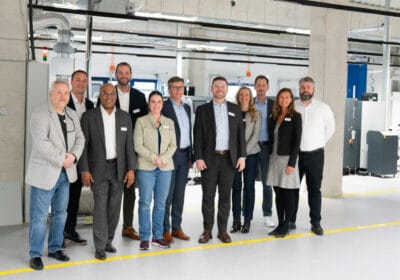In the burgeoning life science, medical and pharmaceuticals markets, robots are breaking into new task areas. In the process not only are they working for man but also, and increasingly commonly, directly with him. More than 200 companies will be showcasing their pioneering developments in this innovative industry at AUTOMATICA 2016, from 21 – 24 June in Munich.
It is not just their market potential that impresses but the applications themselves. For example, special surgical robots are behind minimally invasive procedures introducing new quality standards to operating theatres. In automatic mode, and according to meticulous programming, the robot can function of its own accord. In the case of telemanipulation, on the other hand, the operator uses joysticks to control the robotic arms by means of an endoscopic camera image – a prime example of man-robot collaboration, only just now making its way into industrial robotics.
Hair transplantation by industrial robot
These very cost intensive, special operating systems inspired the development of assistance systems for medical procedures, based on classical industrial robots. The best example: ARTAS. The innovative robotic, minimally invasive hair transplant system features a standard Stäubli TX60 industrial robot. The highly accurate six-axis machine removes individual hair roots, which are then reinserted in the places affected by hair loss. Conventionally, the removal of thousands of hair follicles was a time-consuming and arduous process for the patient.
With the robotic assistance system, doctors can work incomparably faster and more accurately, treat patients more gently and guarantee superior growth rates. “Thanks to their unique performance in terms of path characteristics, accuracy, positional stability and clean-room suitability, the fully encapsulated Stäubli TX series robot sets the standard for medical applications. The six-axis TX60 robots can be integrated directly with the ARTAS system with no modification worth mentioning. As hair loss is very common we already have almost 100 robots in operation for this application alone”, says Stäubli Robotics General Manager Gerald Vogt.
Dual-arm robot tests diagnostic devices
Yaskawa unveiled the CSDA10F dual-arm robot back at AUTOMATICA 2014. “Our dual-arm robot is from the industrial automation stable and was modified for laboratory use. With its total of 15 servo-controlled axes, including a monumental axis and seven axes per arm, the robotic system is more flexible than any human, but above all streets ahead in terms of precision”, according to Dr. Michael Klos, General Manager at Yaskawa.
In a pilot project that is unique in the world the CSDA10F is now taking on the testing of medical diagnostic devices – a highly responsible task, on the correct performance of which human lives depend. The equipment is superior to manual inspection and scores in terms of unlimited reproducibility of the test scenarios, exemplary process reliability as well as previously unachievable efficiency, thereby eliminating the human component as a source of error.
Standard robots in the Champions League as well
Although the hygiene standards for equipment, components and robots in medicine and pharmaceuticals are particularly high there is also a whole string of applications in the Champions League of automation for which no special clean-room robots are required.
The fact that the latter are not confined solely to end-of-the-line packaging activities is demonstrated by a standard six-axis ABB robot in the assembly of delicate components for turbine drills in dentistry. Precision of the highest order is required when assembling a delicate shaft complete with collet to accommodate dental tools such as drills, milling cutters or polishing instruments. This is the only way to ensure that the tools run perfectly true.
The compact ABB IRB 120 is of proven worth in this precision engineering assembly thanks to its repeat accuracy of one hundredth of a millimetre, thereby satisfying all quality requirements. But the user is not just taken with the accuracy of the robot solution but also by its productivity, which should therefore lead to further automation solutions.
Complex solutions thanks to Machine Vision
Whether in the operating theatre, hair transplantation or the testing of diagnostic devices – machine vision plays a key role in each case. The dual-arm robot application uses three camera systems in all, one apiece on each of the two robot arms, the third one housed statically within the cell. The cameras are not just used for controlling the robot but in point of fact are responsible for the actual quality control, recording and documenting the readings appearing on the diagnostic device display.
Machine Vision is tremendously important for many automation projects. This is borne out by the double-digit growth in this industry. AUTOMATICA 2016 affords the perfect opportunity for a birds-eye view of what’s on offer in this innovative sector.







